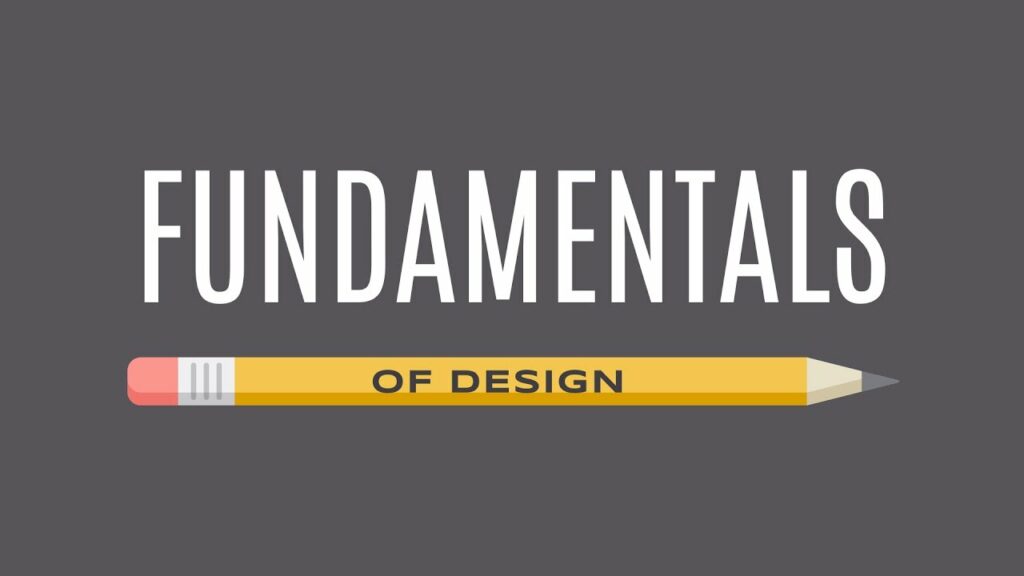Navigating the Design Universe: Exploring the Fundamentals of Design

Introduction:
In the expansive and dynamic world of design, a nuanced understanding of its fundamentals is paramount. This comprehensive article embarks on a journey through the core principles, historical roots, and practical applications that form the bedrock of design. From its origins to its contemporary manifestations, the fundamentals of design serve as guiding principles for creators across diverse disciplines.
Section 1: The Historical Evolution of Design
1.1 Ancient Roots and Ornamental Design
Design, in its earliest forms, traces back to ancient civilizations where ornamental patterns adorned architecture, artifacts, and manuscripts. The intricate designs of ancient cultures, such as those found in Egyptian hieroglyphs or Mesopotamian ceramics, laid the foundation for the visual language that transcends time.
1.2 The Renaissance and the Birth of Graphic Design
The Renaissance era witnessed a revival of artistic exploration and the emergence of design principles that endure today. The meticulous craftsmanship of illuminated manuscripts and the work of artists like Leonardo da Vinci set the stage for the intersection of art and functionality. With the advent of the printing press, graphic design was born, marking a pivotal moment in design history.
Section 2: Core Principles of Design
2.1 Balance and Symmetry
Balance is a fundamental principle that imparts visual equilibrium to a design. Whether achieved through symmetrical or asymmetrical arrangements, a well-balanced design ensures harmony and cohesion. Symmetry often conveys formality, while asymmetry introduces dynamism and visual interest.
2.2 Contrast and Emphasis
Contrast involves the juxtaposition of elements with distinct qualities, such as light and dark, large and small, or bold and subtle. Effective use of contrast directs the viewer’s attention and emphasizes key elements within a design. It is a powerful tool for creating visual hierarchy.
2.3 Hierarchy and Visual Flow
Hierarchy establishes an order of importance within a design, guiding the viewer through a visual journey. Whether through the use of size, color, or typography, a thoughtful hierarchy ensures that the most critical elements receive the attention they deserve. Visual flow complements hierarchy by leading the viewer through a logical progression within the design.
Section 3: Practical Applications of Design Fundamentals
3.1 Graphic Design and Visual Branding
In the realm of graphic design, the fundamentals are the building blocks of visual communication. Designers strategically apply principles like balance, contrast, and hierarchy to create logos, marketing materials, and brand identities. Visual branding relies on a consistent application of design fundamentals to convey a brand’s personality and values.
3.2 User Interface (UI) and User Experience (UX) Design
In the digital age, UI/UX design places user-centric principles at the forefront. Design fundamentals guide the creation of intuitive interfaces, seamless navigation, and visually appealing digital experiences. Consistency in design elements ensures a cohesive and user-friendly interaction.
3.3 Architectural Design and Spatial Arrangement
In architectural design, the fundamentals govern spatial relationships, proportions, and the overall aesthetic of structures. Balance, symmetry, and contrast play a crucial role in shaping the visual impact of buildings and interior spaces. Architects draw upon design principles to create spaces that are both functional and aesthetically pleasing.
Section 4: The Intersection of Form and Function
4.1 Functionality and Utility
While aesthetics are integral to design, the marriage of form and function is at its core. Design should not only be visually pleasing but also practical and functional. The interplay between aesthetics and utility ensures that a design serves its intended purpose, whether it’s a chair, a website, or a public space.
4.2 Ergonomics and User-Centered Design
Ergonomics, the study of human interaction with products and environments, is a vital consideration in design. User-centered design prioritizes the needs and preferences of the end user. Whether designing a product, a website, or an office space, understanding user behavior informs decisions on layout, accessibility, and overall usability.
Section 5: Color Theory and Its Influence on Design
5.1 Psychology of Color
Color theory is a cornerstone of design, with each color carrying psychological connotations. Warm colors like red and yellow evoke energy and passion, while cool colors like blue and green convey tranquility. Designers strategically leverage the psychological impact of color to evoke specific emotions and reinforce brand identities.
5.2 Color Harmony and Combinations
Understanding color harmony is crucial for creating visually pleasing designs. Complementary colors, analogous colors, and triadic color schemes are examples of harmonious combinations that designers use to achieve balance and cohesion. The careful selection of a color palette contributes to the overall aesthetic impact of a design.
Section 6: Typography as a Design Element
6.1 Typefaces and Fonts
Typography is the art and technique of arranging type to make written language legible and visually appealing. Choosing appropriate typefaces and fonts is a critical aspect of design. Each typeface carries a unique personality, and designers carefully select fonts to convey the tone and message of a design.
6.2 Hierarchy and Readability
Typography contributes to the hierarchy of information within a design. Headlines, subheadings, and body text are differentiated through variations in font size, weight, and style. The readability of text is a paramount consideration, and designers employ principles like leading, kerning, and tracking to enhance legibility.
Section 7: Innovation and Technology in Design
7.1 Digital Tools and Software
Advancements in digital tools and software have revolutionized the design process. From Adobe Creative Suite to 3D modeling software, designers have access to a plethora of tools that facilitate creative expression and precision. Technology enhances the efficiency and scope of design possibilities.
7.2 Virtual Reality (VR) and Augmented Reality (AR)
Emerging technologies like VR and AR open new frontiers in design. VR allows designers to create immersive environments, while AR overlays digital information on the physical world. These technologies redefine spatial design and interactive experiences, pushing the boundaries of traditional design mediums.
Section 8: Challenges and Considerations in Design
8.1 Accessibility and Inclusivity
Designers must prioritize accessibility to ensure that designs are inclusive and cater to diverse audiences. This involves considerations such as color contrast for readability, accessible navigation, and accommodating individuals with disabilities. Inclusivity in design fosters a broader and more meaningful impact.
8.2 Environmental Sustainability
In the face of global environmental challenges, designers are increasingly conscious of the ecological impact of their creations. Sustainable design principles prioritize materials, production processes, and life cycle considerations that minimize environmental harm. Designers play a crucial role in promoting eco-friendly practices within the industry.
Section 9: The Future of Design
9.1 Interdisciplinary Collaboration
The future of design is marked by interdisciplinary collaboration, where designers collaborate with experts from various fields. Whether in healthcare, technology, or environmental science, designers contribute their skills to address complex challenges and create solutions that integrate form and function seamlessly.
9.2 Artificial Intelligence (AI) in Design
AI is poised to influence design by automating certain processes, enhancing creativity, and offering personalized design solutions. Designers are exploring how AI can be harnessed to augment their creative abilities and streamline repetitive tasks, allowing them to focus on more complex and strategic aspects of design.
Section 10: Conclusion
In conclusion, the fundamentals of design form a rich tapestry that weaves together aesthetics, functionality, and creative expression. From the ancient patterns of civilizations to the cutting-edge technologies of the future, design principles endure as guiding lights for creators. The convergence of history, psychology, and practical application underscores the multidimensional nature of design, where each element contributes to a harmonious whole. As designers navigate the ever-evolving landscape, the mastery of fundamental principles remains a compass that guides them through the diverse and fascinating universe of design. Whether shaping physical spaces, digital interfaces, or visual identities, designers carry the responsibility of not just creating aesthetically pleasing artifacts but also contributing to a world that is functional, inclusive, and visually compelling. In this ongoing journey of creativity and innovation, the fundamentals of design stand as eternal beacons, illuminating the path toward a future where form and function coalesce in beautiful and meaningful ways.




